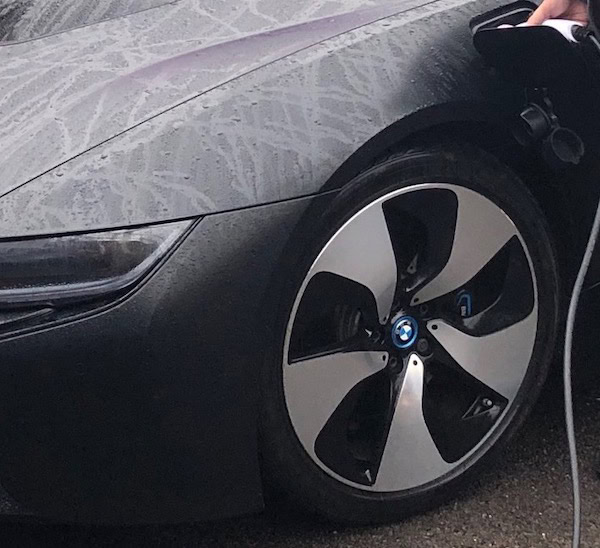
Volkswagen Motorsport confirmed today that it will be taking its all-electric ID.R Pikes Peak race car to chase the all-time EV record around the Nürburgring’s infamous Nordschleife course in summer 2019.
Driver Romain Dumas, who set both the new overall Pikes Peak International Hill Climb record as well as the EV record at the Goodwood Festival of Speed, will return as the ID.R’s driver to attempt a new ‘Ring record.
But let’s be honest: Of all the random track records out there that you could set, the Nürburgring is the one track that everybody cares about—and VW knows it.
“After the record on Pikes Peak, the fastest time for electric cars on the Nürburgring-Nordschleife is the next big challenge for the ID.R,” Volkswagen Motorsport Director Sven Smeets said in today’s press release. “A lap record on the Nordschleife is a great accolade for any car, whether a race car or a production car.”
Because it is no longer competing in the low-density, high-altitude conditions of Pikes Peak, the ID.R will undergo extensive aerodynamic modifications to set its new ‘Ring record. Pikes Peak’s lowest point is its start line, which sits over 9,300 feet above sea level, whereas the Nordschleife’s highest point is only at an elevation of 2,024 feet.
Like the current Nordschleife record-holding Porsche 919 Hybrid Evo, the ‘Ring won’t be the only track Volkswagen goes to before it sets its ‘Ring record.
“As part of our meticulous preparations for the record attempt, we will put the ID.R through an intense test and development program at various racetracks in the spring,” Volkswagen Motorsport Technical Director François-Xavier Demaison said in Saturday’s release.
Of course, Volkswagen also said that it was only going for the EV record up Pikes Peak as well, but then ID.R driver Romain Dumas set the race’s first-ever sub-eight-minute time and captured the overall record there, too. We’re on to you, Volkswagen.
The current EV record around the ring was a 6:45.90 lap time set by the NIO EP9 in 2017. However, many believe that the Porsche 919 Hybrid Evo’s 5:19.55 all-time Nordschleife record is well within reach. Like current all-time record holder Timo Bernhard, Dumas knows the pretty ‘Ring well.
“The thought of driving the ID.R on the Nordschleife is already enough to give me goosebumps. I know the track very well, but the ID.R will be a completely different challenge, with its extreme acceleration and huge cornering speeds,” Dumas said in Volkswagen’s release. “I can hardly wait for the first tests. Breaking the existing electric record will certainly not be a stroll in the park.”
After breaking the all-time record last year, Bernhard admitted that there were a few places he felt as if he could have gone faster in the 919, but he played it somewhat safe so that they could get the record once and for all. So, it’s very interesting to see another Volkswagen Group brand—Volkswagen itself—throwing its super-fast race car into the ‘Ring…ring.
If this brings about an all-out Porsche versus Volkswagen war for ultimate ‘Ring domination, I can’t wait. Few racing series leave technical innovation as open as they are for Nürburgring records, so a ‘Ring lap war could give us the wacky engineering solutions we love to see that wheel-to-wheel competitions love to swiftly ban.














